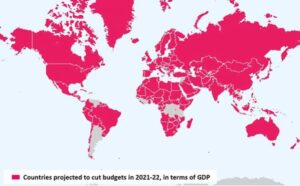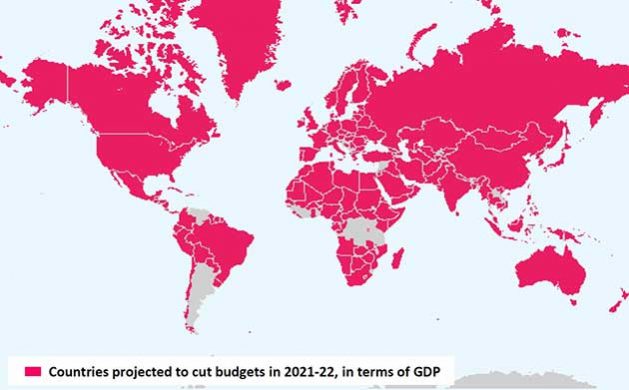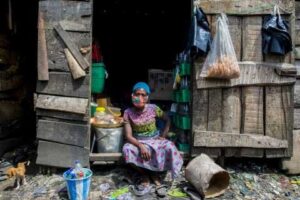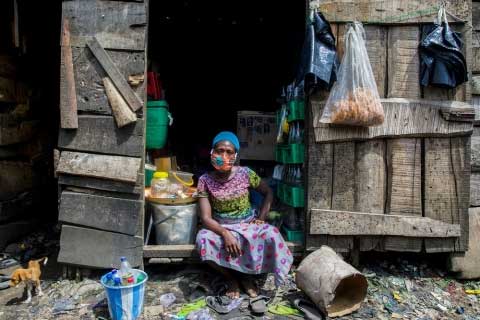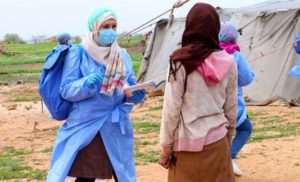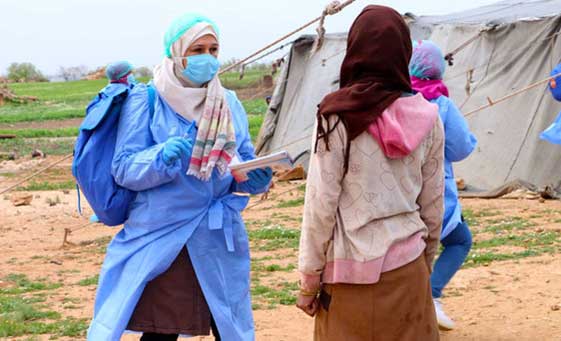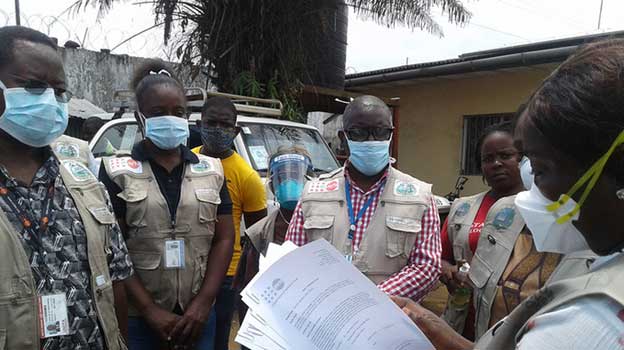
Aid, Civil Society, COVID-19, Economy & Trade, Food and Agriculture, Food Security and Nutrition, Global, Headlines, Human Rights, Humanitarian Emergencies, IPS UN: Inside the Glasshouse, TerraViva United Nations
– ‘COVID 19 has multiplied hunger and malnutrition challenges. We need transformative action!’ The first speaker at the UN Committee on World Food Security’s (CFS) 49th Plenary Session, the Secretary-General of the United Nations, turned the spotlight on the disastrous impacts of the pandemic that have afflicted communities around the world for close to two years.

Nora McKeon
He was echoed by the presenter of the 2021 edition of the State of Food Security and Nutrition in the World for whom ‘COVID is only the tip of the iceberg’, while keynote speaker, Jeffry Sachs, emphasized the multifaceted nature of the crisis, with chronic poverty and conflict at the center.
Delegation after delegation took the virtual floor to share their concerns: Kenya speaking for the Africa Group, Colombia, Cuba, Costa Rica, Norway, Morocco, Peru, Spain, Indonesia, Mexico, Malaysia, Mali, Cape Verde, South Africa, Uganda, Saint Lucia and more. The impacts of Covid 19 on food security and nutrition are heavy and lasting. The vulnerable are the most effected, within and between countries. Covid has deepened and exacerbated existing structural fragilities and injustices in our food systems. Its causes are multisectoral and cannot be treated in a siloed way.
‘Multilateralism, solidarity and cooperation are key to the way forward’, the President of ECOSOC added, and ‘the CFS is a unique multilateral forum because it brings all the actors together in the name of the right to food’. The text adopted at the end of Day 1 summarized all of these contributions, and deepened concern by drawing attention to the possibility of recurrent pandemics.
With this kind of an opening one could have expected a standing ovation when it was proposed, the following day, that the CFS put together a globally coordinated policy response to the impacts of COVID 19 on food security and nutrition and a proposed precautionary approach towards possible future shocks of this kind.
This proposal was a long time in the building. For a year and a half the CFS’s Civil Society and Indigenous Peoples’ Mechanism (CSM) had been documenting the experience and proposals of its constituencies and communities and bringing this evidence from the ground into the global debate. Earlier this year an informal ‘Group of Committed’ governments and other CFS participants had come together to push for the CFS to take determined action. How could it fail to live up to its mandate in the face of the most serious threat to global food security the world has faced since the 2007-2008 food crisis?
Just a week before CFS49 the Group of Committed had held a seminar where evidence and proposals for global policy action were presented by national governments, regional and local authorities, small-scale food producers, the urban food insecure, along with UN agencies, the Special Rapporteur on the Right to Food, and the CFS’s own High-Level Panel of Experts.
The seminar demonstrated that action is being taken by different actors and authorities at local, national and regional levels, while UN agencies have developed and adopted relevant policy instruments and programmes in their respective sectors. What has been missing thus far is a way of putting the different perspectives and initiatives together into a multisectoral, multilaterally coordinated approach. Filling this gap was the proposal that was put on the table in CFS49.
‘We need a globally coherent and coordinated response to support governments’ efforts and the CFS is the appropriate place for this to happen,’ the Ambassador of Mali had exhorted in his opening address.
So what about the standing ovation? The proposal was supported by countries from the Global South led by African countries, the most affected by injustice in access to vaccines, dependency on food imports, and indebtedness, but including also Mexico, Peru, Morocco, the CSM and the Special Rapporteur on the Right to Food. ‘This is the place to deal with COVID!’ he said. ‘It is the priority food issue today. It wasn’t addressed by the UN Food Systems Summit. The CFS has the mandate and the tools, and the other UN agencies are highly committed to cooperate.’
But, incredibly and unacceptably, the proposal did not pass. It was blocked on specious, procedural grounds by a steamroller coalition of big commodity exporters who push back on any possible limitation that might be placed on global trade in the name of human rights, equity, environmental concerns: the US, Canada, Argentina, Brazil, Russia. The EU, shamefully, was silent.
The implications for inclusive multilateralism, democracy, the needed radical transformation of our food systems are severe. ‘A key barrier to transformation is interference from corporations,’ stated the delegate of Mexico. ‘Governments need to assume their role as agents of change, regulators of food systems, and protectors of the planet, but we can’t do it alone. Global attention is needed and the CFS is the right place for it.’
But The CFS is being held hostage. The arrogance with which a few are ignoring reality, evidence and urgency is leading to an unacceptable increase in the violation of the human rights of the many. Patience is wearing thin. ‘If I’m in this room it’s to honor the concerns of those most affected in my region,’ a member of the Group of Committed asserted in the aftermath of the session.
And the people of her region, along with others from around the world, are raising their voices ever more loudly, as in the counter mobilization to transform corporate food systems organized last July in parallel to the Pre-Summit of the UNFSS [hyperlink]. Radical food system transformation is being built from the ground up and the CFS, however handicapped, is the most resounding global echo chamber for people’s claims.

